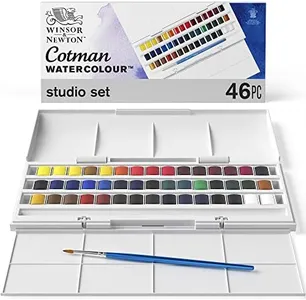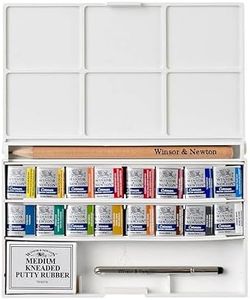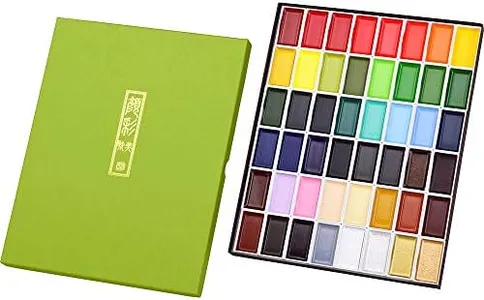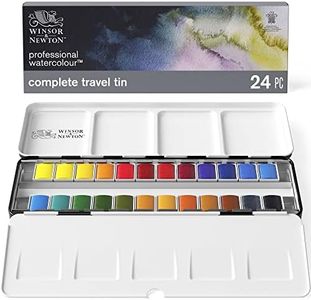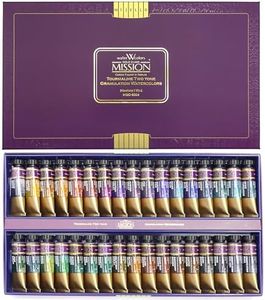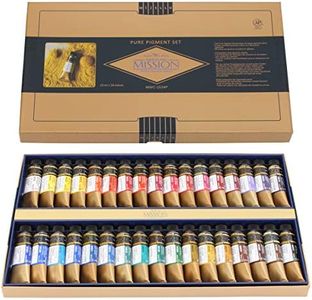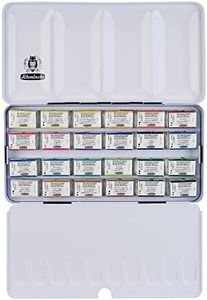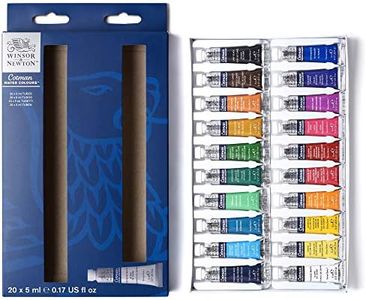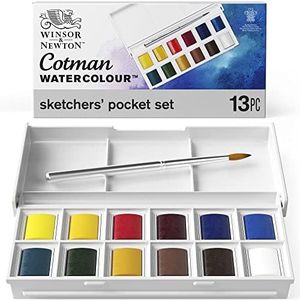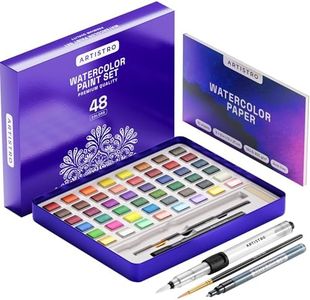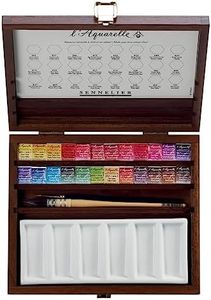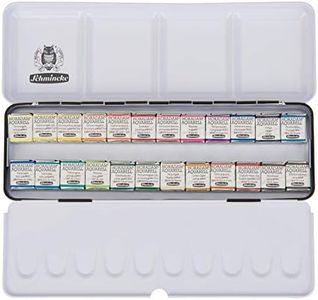We Use CookiesWe use cookies to enhance the security, performance,
functionality and for analytical and promotional activities. By continuing to browse this site you
are agreeing to our privacy policy
10 Best Watercolor Paints
From leading brands and best sellers available on the web.By clicking on a link to a third party's website, log data is shared with that third party.
Buying Guide for the Best Watercolor Paints
Choosing watercolor paints can be a fun and rewarding experience, whether you’re a beginner or looking to refine your art supplies. The key is to understand your own style and needs first—do you prefer painting detailed portraits, broader landscapes, or experimenting in sketchbooks? Knowing this will help you match your paints with the types of projects you enjoy. Think about how often you paint, where you tend to work, and what results make you happiest. From there, focus on the important features of watercolor paints to find the best set for you.Type (Pan vs. Tube)Watercolor paints are commonly available in pans (solid blocks) or tubes (paste-like). Pans are very handy for portability, making them great for sketchbooks, outdoor painting, or beginners who want to try different colors with ease. Tubes generally offer richer, more intense color and are better if you like to use large washes or cover bigger areas. If you prefer on-the-go and quick set-up, pans may suit you, but if vivid color and flexibility matter most, tubes are often best.
Quality (Student vs. Artist/Professional)Watercolors are usually labeled as student or artist/professional grade. Student grade paints are more affordable and contain less pigment, making them less vibrant but easier to learn with. Artist grade paints use higher-quality ingredients, resulting in richer colors and better mixing. If you’re just starting or painting casually, student watercolors are a good choice. For experienced artists or those wanting the brightest, most reliable results, artist-grade paints are the way to go.
Pigment LoadThis refers to how much color pigment is in the paint. A high pigment load means the color will be more intense and richer, requiring less paint to achieve strong results. Lower pigment load paints can appear weaker and may need more layers. If you like bright, bold colors or use large areas, choose a higher pigment load. For gentle washes or soft effects, lower pigment loads may be just right.
TransparencyTransparency is how much light passes through the paint and affects whether the paper or other colors show underneath. Transparent colors let you create luminous, layered effects, while opaque colors cover more completely. If you enjoy traditional watercolor techniques like glazing and layering, focus on transparent paints. For more coverage or bold accents, include some opaque colors in your set.
LightfastnessLightfastness measures how well the paint resists fading over time when exposed to light. Paints with high lightfastness will keep their color for many years, making them important for works you want to display or sell. If you plan to keep and show your paintings, choose paints labeled as highly lightfast. For practice, sketches, or temporary work, lightfastness may be less important.
Color RangeThis is the selection of colors included in a set or available individually. A wide color range gives you more mixing options and convenience, but a smaller, carefully chosen range can teach you to mix and combine colors creatively. Beginners often start with a basic palette of primary colors, while more advanced users might appreciate specialty or unique colors for specific subjects.
Rewetting AbilityRewetting ability refers to how easily dried paint on your palette can be activated with water. Some paints reactivate instantly, while others can become hard and less usable. This is important if you tend to let paints dry out or use a travel palette. If you like to return to your paints later or often work in sessions, good rewetting ability is a real plus.
